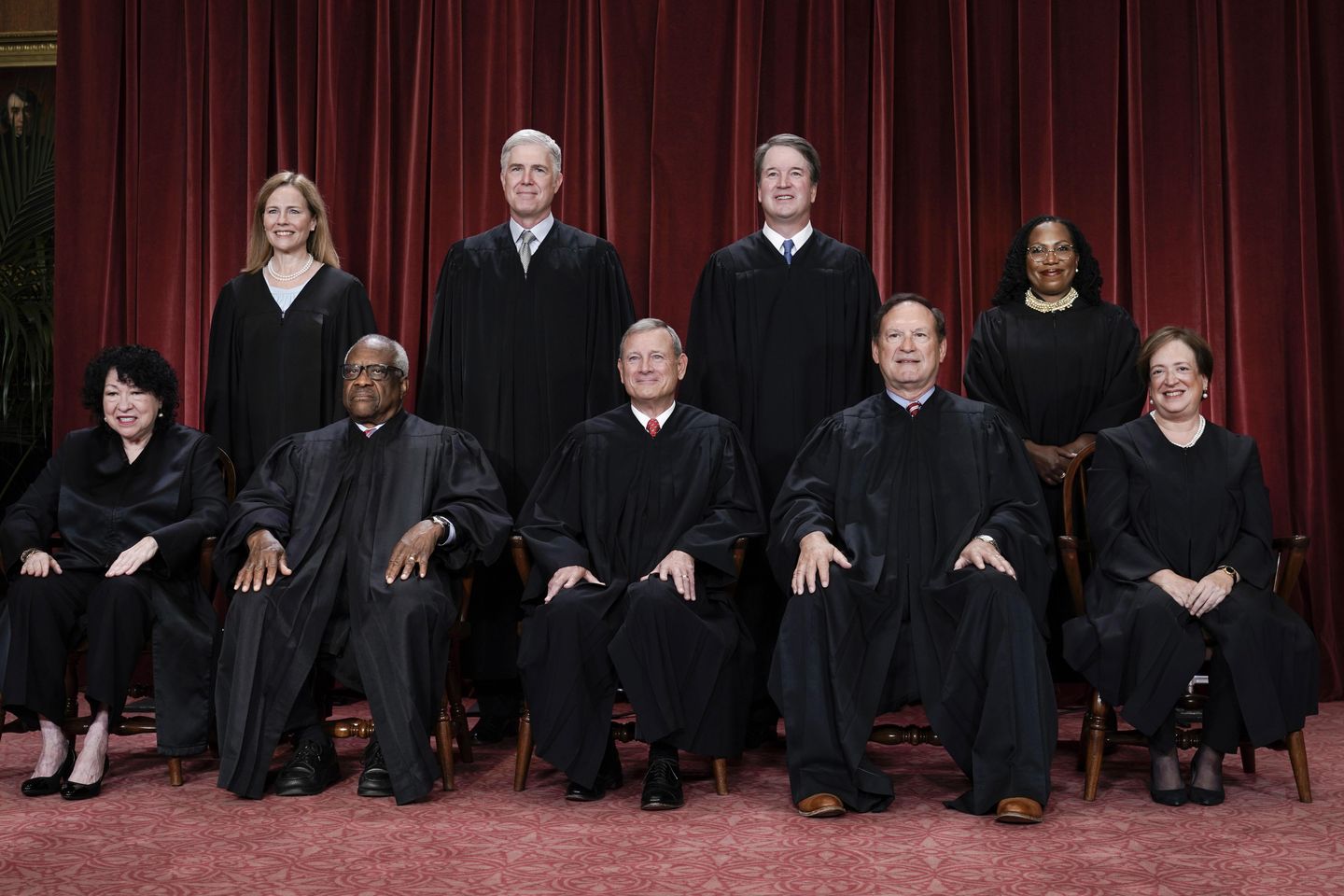
Supreme Court justices frequently chide their critics by pointing to how many of their decisions are unanimous — but that unanimity was tougher to find this year.
Just 42% of cases argued and decided in the 2024-2025 term were unanimous, according to Adam Feldman, Supreme Court scholar and creator of the Empirical SCOTUS blog. That’s down from half of the rulings two years ago, and lower than the average unanimity rate of the last two decades.
“It’s really been going down,” Mr. Feldman said.
At the same time, the number of 6-3 decisions with the six Republican appointees in the majority slid to just 9% of cases, which is lower than the average of the last four terms and suggests that the divided cases didn’t cut as cleanly across ideological lines as some court critics argue.
The justices wrapped up with final opinions late last month, completing a session that saw relatively few blockbuster rulings.
Chief Justice John G. Roberts Jr. was the champion majority-maker, voting with the majority in 62 of the 65 opinions issued — or 95% of the time. Justice Brett M. Kavanaugh was second, finding himself in the majority 92% of the time, according to Mr. Feldman’s data
SEE ALSO: Supreme Court to hear challenge to transgender athletes in girls sports
Justice Ketanji Brown Jackson was the least majoritarian, voting with the majority 72% of the time and dissenting 28% of the time.
Taking away the unanimous rulings and looking only at divided cases, the numbers are somewhat more stark. The chief justice was in the majority 92% of the time, but Justice Jackson was in the majority 53% of the time.
Mr. Feldman said that signals “her growing role as a distinct and increasingly vocal liberal dissenter.”
That played out in one of the major 6-3 decisions that was split along ideological lines at the end of the term. In that ruling, the high court said lower courts probably did not have the power to issue universal injunctions that go beyond the parties in front of them.
Justice Jackson said her colleagues had given the president a pass to avoid judicial scrutiny, leading to “the kind of unchecked, arbitrary power the Founders crafted our Constitution to eradicate.”
Justice Amy Coney Barrett, writing the majority opinion, shot back, saying there was no need to “dwell” on Justice Jackson’s argument.
“Waving away attention to the limits on judicial power as a ’mind-numbingly technical query,’ she offers a vision of the judicial role that would make even the most ardent defender of judicial supremacy blush,” Justice Barrett wrote.
All five other GOP appointees signed on to Justice Barrett’s opinion, approving of her dressing down of Justice Jackson.
Will Chamberlain, senior counsel for the Article III Foundation, said the conservatives “were really offended by Jackson’s dissent.”
“That is not something I have seen in my entire career — that level of vitriol going in both directions,” Mr. Chamberlain said. “The collegiality on the court is not good.”
That defies the standard line justices often deliver about getting along far more than their rulings would suggest.
Justice Sonia Sotomayor, meanwhile, continued her practice of defying the usual convention of dissents. It’s traditional for the justice writing to say “I respectfully dissent,” or words to that effect.
But Justice Sotomayor has increasingly made a habit of dropping the “respectfully” language and flatly stating “I dissent.” She did so again in three of the six lead dissents she wrote this term — in the universal injunctions case, a case involving a Tennessee law barring sex transition medical treatments and a case ruling against a Maryland County’s pro-LGBT curriculum for elementary school children.
Justice Clarence Thomas was once again the champion opinion writer, filing in 29 of the court’s 35 cases. Seven were majority opinions, 13 were concurrences and nine were dissents, the most dissents of any member this term.
Justice Jackson was in second place, with 24 total opinions. Chief Justice Roberts, on the other hand, wrote just six opinions — all of them for a court majority. He wrote no concurrences or dissents.
In a striking confluence, Justices Thomas, Samuel A. Alito Jr. and Neil M. Gorsuch all took part in 64 cases and were in the majority in 50 of them — though not all the same rulings.
Justice Barrett was in the majority in 58 of the 65 cases she took part in.
Justice Sotomayor was in the majority in 51 cases of the 65 she sat for.
Justice Elena Kagan, an Obama appointee, found her way to more majorities than the other two Democratic appointees, coming out in the majority in 54 of the 65 cases.












